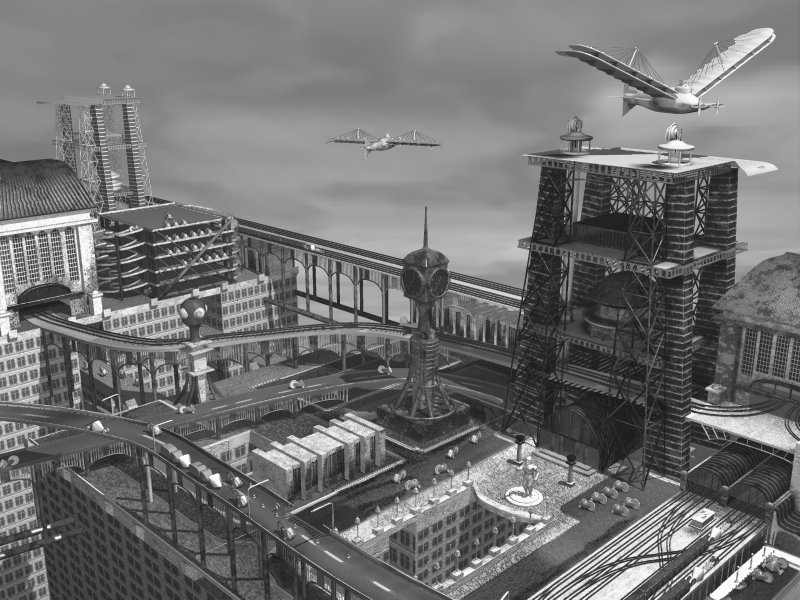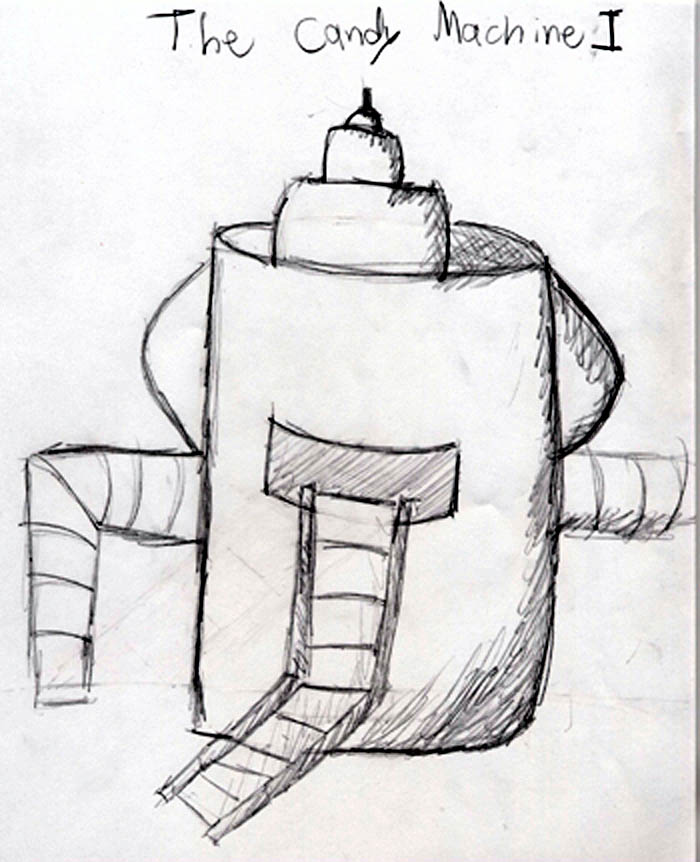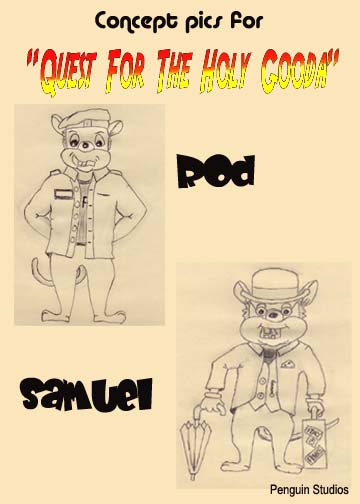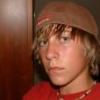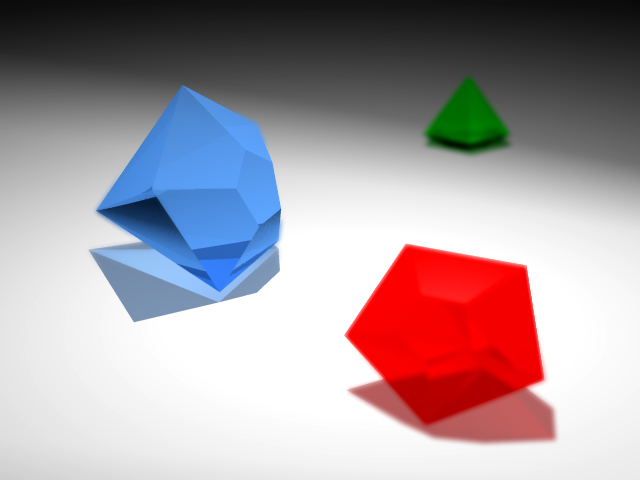Search the Community
Showing results for 'project'.
Found 8,701 results
-
Hi hashers ... I was just playing whit A:M .. it took me 10 minutes .. and i liked his results you can check it in : http://xtaz.com.br/anima/aros.zip ( use loop oiption ) ( 590 Kb / MOV ON 2 )
-
Just checking to see what I could do with Render as lines and a bit of glow. Cheers, E lr_001.mov
-
It's always nice to see someone complete a long-term project. I liked the story. I guess that's why they call them hooters, huh?
-
"The Stuck Door Project"...part 1 (WIP)
Bitter Jeweler posted a topic in Work In Progress / Sweatbox
So I am getting a little carried away. With A:M its very easy too! After doing "It's a Pitch" by the book, I thought "Wow, this is cool!" So, I just had to do some elaboration on this one. I am getting ahead of my self in many ways, but that drives the learning. Now I need to figure out how to switch to the 2nd camera for the next shot. I have it set up to aim at the rabbit for his walk to the door, but haven't figured out how to keyframe a camera switch. http://www.bitterjewelerfilms.com/Stuck%20Door.wmv -
Hi all, i´ve started a project to descripe a future town as they thought of it in the beginning of the 20th Century. Here´s the first complete Picture.
-
I was thinking about how I'm starting to get into building structures and said "well, Willy Wonka's factory has many interesting shapes and structures.." Not only that, but it'd be really fun to make the candy machines and even just the building itself! I started by planning to sketch out some concepts of what's going to be in the building. I've scanned my first one and posted. I'm excited just thinking about this..
-
What happens in this film happend to me a few days ago, I add some things, but mostly it is true. I like the way it is turning out, 47 seconds and 12 MB, sorry I no longer have DivX so I can't encode them anymore . Enjoy. { PROJECT FINISHED DELET THIS POST } it is also available at my site, http://www.psyog.cjb.net wich I will be updating severly for the next few days, it is in the movies section. Any input on the animation before I do a Final render would be nice. Thankies, enjoy.
-
Hi - Here is the link to the short film I've been trying to fit in around everything else. Things are finally chugging along so hopefully I'll be able to update this site with some regularity ( I'm sure these are famous last words as the year goes into meltdown) - but oh how I will try. Current wildly optimistic projections have me finishing this sometime in the first quarter of next year. Anyway, enough Blah blah heres the link - look forward to hearing any comments. Raglan Cheers Matt
-
Thought I'd toss up one more teaser from my project. This character is finished modeling and rigging but is slowly going through the texture process. Comments Etc welcome -David Rogers
-
Hi Guys! I finished the first parts of my project, ... This movie will presents some aikido technics and etiquets! But just I can upload this in more parts! Sorry! This are first parts: Part 1 (This is required divx 5.03) Part 2 and I'm waiting your opinion! Sharky
-
As you can see below I am still piecing him together. The coloring is temporary and I am going to try making a bump map so he has the right shell. What I want to use him for, however, requires him to speak. I discussed this with a few people on the IRC chat and they said the best way to do it was to animate his face, then apply it to the model as a decal. Someone also mentioned that it is possible to use pose sliders with the decal so I could apply the decal and still change it. Does anyone know how this is done? This sounds like what I need to use.
-
Here is a model of the New Horizons Pluto Spacecraft. Not that impressive, but a paying client is extremely happy with the final model. Animation and Texturing will be done by others. My contribution to the project is complete. I just provided the mesh model. New Horizons Link
-
Hello everyone. This is my first AM project, I bought the software last week and I can't put it down! Especially since I had previously purchased Truespace 6.6, what a waste of time and money! Well I guess it was a tought me to appreciate AM. He will eventually be a soccer player. Sugestions and critiques are MORE than welcome. I could use all the help I can get. Thanks! My Webpage My Webpage
-
Hello all. It's amazing what great things happen on #hash3d, not only interesting conversations, great guffaws and of course now the monthly lectures But for me a couple weeks ago the idea for a "new" story came out of IRC. I don't want to give much a way but the 2 main characters are loosely based on 2 of our well known A:M ers. It will be an action adventure type story if all goes well. Hopefully through diligence on my part my skills will match up to my imagination and I can do the story justice.
-
-
I'm working on a personal project I hope to animate sometime soon. When I finish this model, it will be my first real completed 3d model. The entire thing is being modeled in Animation Master 9.5 (atleast until I upgrade to 10). As I get further along, I'll be posting finished models, textures and storyboards. Any tips, crits, or input are greatly appreciated. I'm teaching myself as I go.
-
I keep thinking of all of these ideas of animations and models! I have like 10 projects I have to finish!!!! Anyways, I thought of an animation I want to make and it involves a diamond...therefore I'm made a diamond. I'm still trying to get the material right but heres a neat pic of the diamonds with different hues. Tell me what you think because I want the diaond to look good. Thanks
-
Cool Thanx. Next... What's the 'secret' to getting the right picture to show up in the projects menu for each project. I have a situation where I have a folder with a .prj file and a .jpg file, of the same name. I have the .lbr file with the correct path pointing to the project. In the library when A:M is open, I see a graphic of the 'bowling ally' and the correct name of my project. When I double click on the project, the correct project opens. Where's the bowling ally thumbnail coming from?
-
Hi Gang - Attached is the early stage of a my first *scene* in A:M. There will be an inhabitant and grass and all that .... but I'm posting for your comments. Thanks for looking. Doug click me ...
-
Where are the project files placed? Netrender will not share the project files (or textures, etc.) over the network or something. It needs to be accessable by every computer in your network by itself best by using the same network drive letter or you have to replace the path-string "c:/project/myproject/" by "g:/project/myproject/" or something like that. See 6.) for where to do that. Or can you already access it like that on your windows file explorer using the same path and it can not access that? Best regards *Fuchur*
-
Hi Robert, a good starting point might be that: It is a shame, that the pdfs are not available anymore here, but there is still nice information in there. And here the PDFs are still available: Important: All computers need to be in the same network of cause! It is very helpful, if you have the render-data at a place where every computer can access it. Best is a NAS or another type of network drive. If you do not have something like that, you can still copy the data (A:M files, textures, etc.) over to each computer on the same position like for instance "C:/am_project/my_project.prj". Important: Do not copy it on your desktop, since the path will vary from computer to computer if the computer user name is different(!). In general it is pretty easy: 1.) Start RenderServer_64.exe on one of your computers. Make sure it has at least one Core assigned, which is not occupied by a Messenger/Slave. Theoretically it is not necessary, but I think it is the best option. 2.) Now you should read out the IP-address and Port of this computer / the Render Server. You should be able to see that by going to "Tools > Options > Connection". 3.) You can use the other cores of the computer (renderserver) to render too. 4.) Double-Click on RenderMessenger_64.exe in the A:M folder and use the wizard. There your NetRender Server should be automatically set to the IP address you got from step 2. If not, put it in. Same with the port. 5.) On "User defined data" you do not have to put something in, but it is a good idea to write something in that helps you to identify the computer with. That makes it easy to find out, if something is happening with that computer (this is not very hard to guess if you have only 1 or 2 computers in use, but I did it with 12 computers before and than this is really helpful). 6.) If the path of the project files (etc.) is different for the computers (so you could not use a NAS / network drive with the same letter (P:/, etc.) on the computers or you could not copy the files to the same position, the next step can help you. I would try to avoid it, but you can try it out here. 7.) Now start the next computer and install A:M on it. You do not need an own license for that computer or something. After install, just click on "RenderMessenger_64.exe" and follow the Wizard here too. Be sure to put in the right IP and Port of the RenderServer now. 8.) Check the connection of the Rendermessenger. You can see that, in the task bar (next to the clock on Windows). If the icon shows a connection (both "lines are next to eachother without a gab inbetween). If that worked, go back to the Renderserver and have a look. In the lower area of the RenderServer-Window you should now see the other computer-Netrenderslaves and the one of your own computer. 9.) If that is the case, the connection is working and you should be pretty ready to go :). After that just open Render Messenger on both computers as often as you've got cores (or virtual cores if you use HT/SMT). Only on the Netserver computer leave one to the server. So if you have a 4 core computer with HyperThreading (HT, Intel) or Simultaneous Multithreading(SMT, AMD) you can use 8 instances on the other computer and 7 on the the server (if the server is a 4 core too). 10.) Now on the Render Server go to "File > New". This will open a new window (Pool1 or something like that). In that at the top right-click and choose "New Job". A wizard will pop up. Give it a name (this is only for you if you render a couple of different jobs in a row for instance you can see what you do there... for instance "Peter's day out - Walk animation Scene 01 - Take 01" or something like that is a good idea, especially since I leave the jobs in there in general even if they have finished. Browse for the project-file (or chor) on the next button. Be sure, that the path is available on all computers in the same way (or use the option of 6.). Select which camera and chor in the project you want to use below that. In general you can leave OpenMP off and GPU is only needed if you use for instance FakeAO/SSAO or something like that. But first I would just try it with an very easy project. 11.) Next put in the render settings you want or use a preset. At the path at "Filename" make sure that the path is available for any computer. You can render to your own c:/ or a net-drive. For the net drive be sure you can access that from any computer. Anything else should be clear. It is mostly the normal render settings you already should know. 12.) After that the new job should be available in the Pool1-Wndows. Now save the job on the server somewhere. (or a net drive... this does not need to be available to other computers) 13.) Now drag and drop the Instances in the lower area of the Window to the lower part of the Pool1 window. After that, the Netmessengers on the computers should start Renderslaves and render the things. You should be able to watch that on the computer displays and you should be able to see that on the REnder Server too. It refreshes every few settings. If something is not working, you should get an information about errors and so on. If you get some, check what it might be on the computer or by having a look at the render server. Notice: In the Pool1 Window the right mouse button is key. There are a couple of different options there which are really helpful (and pretty straight forward). I hope I could help a little. If you have any kind of question or problems let us know. Best regards *Fuchur* PS: And this might be interesting for a lot of cores too: https://www.patchwork3d.de/start-am-netrender-185-en
-
Hey everyone, A while ago, I mentioned that I was working on a pair of base meshes for my own projects, and that I also would be willing to share with the community at large. I have a full body finished now, but there is still a lot of tweakage to be done. I've been looking at this for a while now, so I was hoping to get some fresh perspective other than the random references I've cobbled together. Please visit the page and let me know what you think and what features you think would be useful in a basic mesh of this type (in terms of being able to stretch/shrink parts of the body, change levels of musculature, whatever). -Edit: Still graphics heavy, but the initial load has been reduced by a factor of 2 or 3. http://www.prism.gatech.edu/~gtg724n/common.html Thanks in advance, Bjorn
-
I'm not showing too much of this stuff around (just a treat for the forum crowd ) but here is a character I am working on for my In progress short film. More details and will be forthcoming as soon as the crew and I have things more in hand. -David Rogers
-
Hello Hashers- Doing a simple "cookie cut" mapping effect and it is not responding like it should. Instead of clean cutting it has a bizarre transparency effect whereby it chunks up the grid (see photo). I have embedded the simple project if anyone would like to test it. Also attached is the tga image used for mapping in the event it wasn't embedded along with the project. Thanks for any insights! Tom whitee0.tga CookieTest.prj
-
I rarely have that problem (lack of words) It's hard to accept this and even harder to hear it said when we are experiencing problems but... more than 90% of the time it's the user, not the software. That's just the way it is. We are, more often than not, the source of our own problems. Having said that... quite often the software can help guide the user to a solution they would otherwise not see. But computers only do what we tell them to do. Some of that is coded in software while some of it is the user not understanding how to use that software. In the case of the mysteriously moving object, the movement is very likely directed by something you have set. With regard to the rotating sphere.... is it rotating in the model (less likely) or an Action or Choreography (more likely)? If in the Model window... does the model have any poses set up? Models can't change on their own as the data is static so if something is changing then we can look to a pose (relationship) or action. There are two types of Action, standalone and choreography. If in an Action or Chor then you've very likely but unintentionally animated the object. So we'd need to crack open the timeline and look at that aspect. As Robert suggests, seeing the project file would tell the tale. In the latter case of the ball straying off the path my first guess would be that you've placed your bone correctly from the front view but if looking from the side might not be placed at 0 on the Z axis. If not this then it could very well be a constraint that isn't set up correctly (this is actually more likely but it's easy to check for bone placement first) To know more about this we'd need to know more about how you set your object to follow the path. We have to guess what you are doing because we don't know. One of the best ways to resolve a problem is to record a video of the issue and share that.(such as Robert is doing that demonstrates how he sets up a project). There are many video capture software but currently (on the free side) I'm recommending Open Broadcast Software (LINK). Get the Studio version not the classic. On the paid side it's really hard to beat Camtasia (LINK). The video approach works best because it captures exact steps used in a process. This can not only resolve a problem but lead to suggestions that improve workflow and better usage of the software. The next best approach to solving a problem is to share an example of the problem in a project. This can either be the actual project itself or another setup specifically to demonstrate the problem. The latter is usually best in cases where, for one reason or another, the user can't share parts of the project. For instance, when they are working with someone else's files and don't have permission to share the files. The downside of sharing files is that care must be given to share all of the pertinent files. Since A:M doesn't automatically save files into a Project these can inadvertently be left out. Software can't always anticipate/guess what we want. These two methods (video capture and sharing of (embedded) project files is also the ideal way to submit bug reports for those rarer instances when the problem isn't on the part of the user but fully in the realm of the software. One of the reasons I rarely have frustrating problems with A:M (or any other software) is that my first thought is to never blame the software. Once I've ruled out user error (my own or someone elses) then I can better see the shortfalls of the software. And in most cases there is a reasonable workaround.











